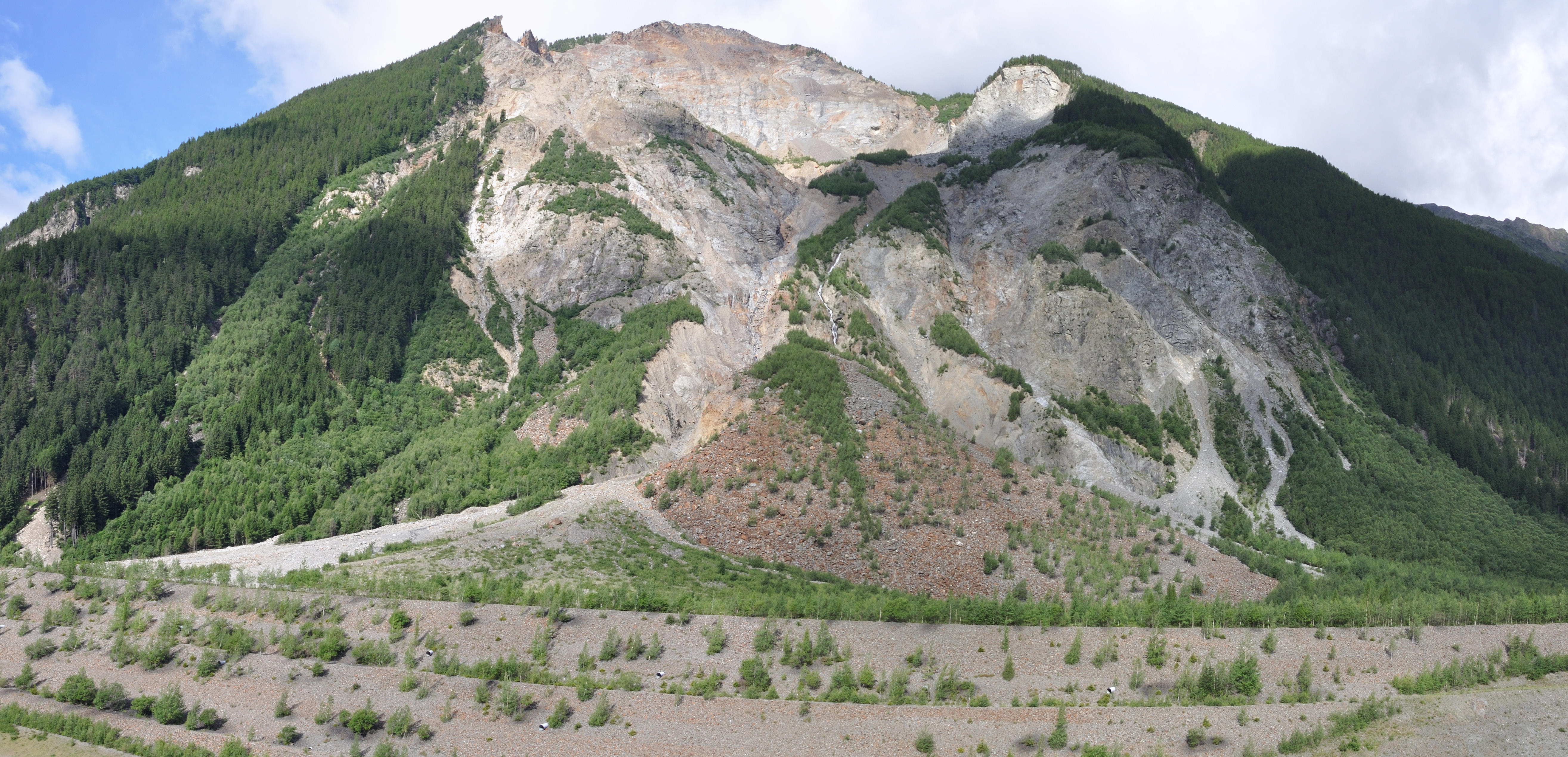Large slow rock slope instabilities, including deep-seated gravitational slope deformations (DSGSD) and rockslides, are extremely widespread in alpine environments (Agliardi et al 2013; Crosta et al, 2013). They usually evolve over thousands to tens of thousands years, are often active and can undergo partial or total “slow to fast” evolution to catastrophic failure.
Large rockslides evolve through progressive failure processes, resulting in complex time-dependent behaviour eventually reaching tertiary creep and collapse (Agliardi et al, 2001; Crosta and Agliardi, 2003; Riva et al., 2018). Nevertheless, these phenomena are usually identified when they are already mature (i.e. weak, sensitive to external triggers) and thus difficult to anticipate.
In alpine settings, progressively failing rockslides are very often observed within slopes affected by deep-seated gravitational slope deformations (DSGSD). The latter are usually characterized by a “non-catastrophic” character, long life and slow, apparently constant displacement rates (Frattini et al, 2017). Nevertheless, the genetic/evolutionary links between rockslides and DSGSD and their possible predictive use are still unexplored.
Large rock slope instabilities interact with inhabited areas, transportation networks and infrastructures (in Lombardia these phenomena affect directly or indirectly 10 km2 of urban areas, 10 km of railways, 180 km of main roads, 100 km of penstock or tunnels related to hydropower facilities). Structural countermeasures are usually not feasible to reduce large landslide hazards, or require unsustainable costs. Thus, risk mitigation must usually be undertaken in terms of forecasting and prevention, through regional land planning practices and the implementation of monitoring and Early Warning systems (Crosta et al 2017). However, this remains challenging, since:
- large slow rock slope instabilities are usually not accounted for in land planning;
- site-specific studies are hardly systematically performed for all the mapped phenomena;
- a consolidated best practice to characterize and predict the behavior of large rock slope instabilities is still not implemented in Lombardia.

Objectives
The project aims at improving the knowledge of the mechanisms, activity and damage potentials of large, slow moving landslides in the prealpine and alpine areas of Regione Lombardia. Through innovative research, we look for criteria to identify slow rock slope deformations more susceptible to progressive (and potentially catastrophic) evolution.
The project will produce and disseminate new geodatabases and methodological approaches to characterize the damage potential of slow, large rock slope instabilities on regional and local scale through innovative mapping, monitoring and modeling approaches.
Methodology
The proposed goals will be achieved by integrating different investigation and analysis techniques on both regional and local scales. Project activities will be deployed into six interrelated workpackages:
- WP1: new, focused inventory geodatabase of large, slow moving landslides in the alpine and prealpine areas of Regione Lombardia, developed on the regional scale but including local-scale geomorphological and morpho-structural features.
- WP2: advanced characterization of the state of activity, decadal displacement trends, and kinematics of large rock slope instabilities using satellite radar interferometry.
- WP3: multivariate statistical analysis of the relationships among landslide morphometry, morpho-structure, geomechanics and activity of large rocks slope instabilities.
- WP4: site-specific analysis of selected case studies, including site characterization, absolute dating, ground-based and space-borne monitoring and numerical modelling.
- WP5: regional scale geodatabase of the damage potentials of large rock slope instabilities in the alpine and prealpine areas of Regione Lombardia as a contribution to land planning and risk mitigation at regional and local scales.
- WP6: Dissemination and communication plan to reach different targets (stakeholders, practitioners, general public, high-school students, scientific community, funding institutions) through specific messages sent using specific media at definite milestones.